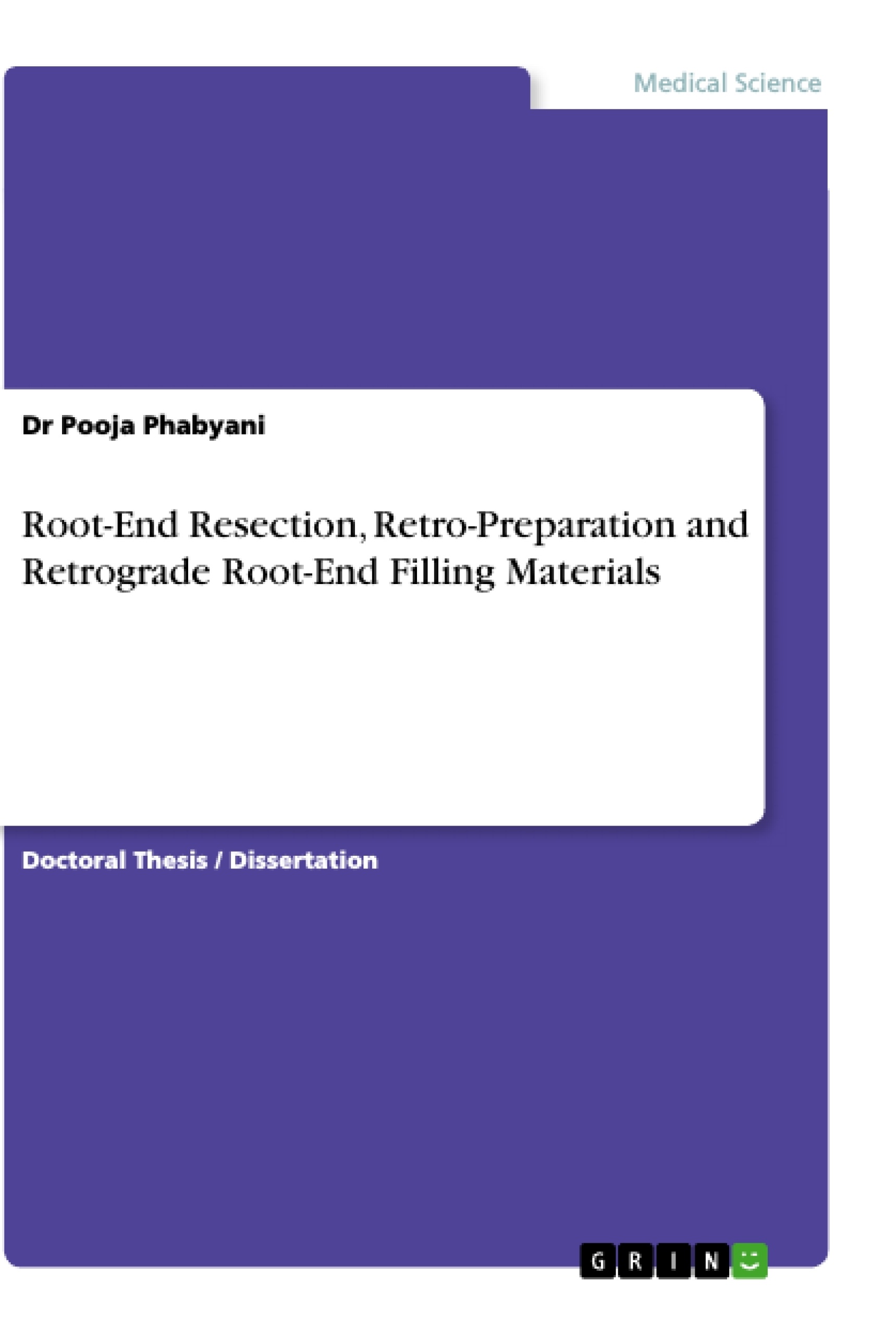This book analyses different types of retrograde filling materials. The major goals of root canal treatment are to clean and shape the root canal system and seal it in 3 dimensions to prevent reinfection of the tooth. Although initial root canal therapy has high degree of success, failures can still occur after treatment.
Recent studies reported failure rates of 14%–16% for initial root canal treatment. Lack of healing is attributed to persistent intraradicular infection residing in previously uninstrumented canals, dentinal tubules, or in the complex irregularities of the root canal system. The extraradicular causes of endodontic failures include periapical actinomycosis, a foreign body reaction caused by extruded endodontic materials, an accumulation of endogenous cholesterol crystals in the apical tissues, and an unresolved cystic lesion.
This book is composed of ten chapters and begins with the need of root-end resection. The succeeding chapters deal with the method and concept of root-end resection, root end preparation to receive the material, ideal requirements of materials to be placed in the resected and prepared root-end. The concluding chapters describe various root-end materials available in the market so far and their properties, focusing on each individual material one by one, their advantages and disadvantages.
This book will prove useful to Endodontists and Researchers in the field of endodontic surgeries & root-end filling materials. Also it would provide the undergraduate and postgraduate students an easy way of reference for covering a broad spectrum of Root-end filling Materials available today, in lucid and simple language.
Table of Contents
- Preface
- Chapter 1: Introduction to Root-End Resection
- Chapter 2: Techniques of Root-End Resection
- Chapter 3: Root-End Preparation
- Chapter 4: Ideal Requirements of Root-End Filling Materials
- Chapter 5: Root-End Filling Materials: Historical Perspective
- Chapter 6: Zinc Oxide Eugenol (ZOE) Based Materials
- Chapter 7: Resin-Based Root-End Filling Materials
- Chapter 8: Bioceramic Root-End Filling Materials
- Chapter 9: MTA Based Root-End Filling Materials
- Chapter 10: Conclusion
Objectives and Key Themes
This book aims to provide a comprehensive overview of root-end resection, retro-preparation, and retrograde root-end filling materials. It covers the history, techniques, and properties of various materials used in endodontic surgeries.
- Root-End Resection Techniques
- Retrograde Root-End Preparation
- Ideal Requirements of Root-End Filling Materials
- Properties and Applications of Different Root-End Filling Materials
- Historical Perspective of Root-End Filling Materials
Chapter Summaries
- Chapter 1: Introduction to Root-End Resection: This chapter introduces the concept of root-end resection as a surgical procedure in endodontics. It explores the indications and contraindications for root-end resection, and discusses the importance of proper diagnosis and treatment planning.
- Chapter 2: Techniques of Root-End Resection: This chapter provides a detailed explanation of the various techniques used for root-end resection, including surgical approaches, flap design, and instrumentation. It highlights the importance of maintaining proper surgical technique and minimizing complications.
- Chapter 3: Root-End Preparation: This chapter focuses on the preparation of the resected root-end to receive the filling material. It covers the principles of root-end shaping, instrumentation, and irrigation, emphasizing the importance of achieving an adequate seal.
- Chapter 4: Ideal Requirements of Root-End Filling Materials: This chapter discusses the ideal properties of root-end filling materials, including biocompatibility, sealing ability, dimensional stability, and ease of handling. It provides a framework for evaluating and selecting appropriate materials for different clinical scenarios.
- Chapter 5: Root-End Filling Materials: Historical Perspective: This chapter reviews the historical evolution of root-end filling materials, tracing their development from early materials like zinc oxide eugenol to the latest advancements in bioceramics and MTA-based materials. It highlights the challenges and advancements in the field.
- Chapter 6: Zinc Oxide Eugenol (ZOE) Based Materials: This chapter focuses on ZOE-based root-end filling materials, discussing their properties, advantages, and disadvantages. It explores their clinical applications and limitations.
- Chapter 7: Resin-Based Root-End Filling Materials: This chapter examines resin-based root-end filling materials, covering their composition, properties, and clinical applications. It discusses the advantages and limitations of resin-based materials in endodontic surgeries.
- Chapter 8: Bioceramic Root-End Filling Materials: This chapter delves into the properties and applications of bioceramic root-end filling materials. It explores their biocompatibility, sealing ability, and potential for tissue regeneration. It also discusses their limitations and future directions.
- Chapter 9: MTA Based Root-End Filling Materials: This chapter focuses on MTA-based root-end filling materials, highlighting their unique properties and clinical applications. It discusses their biocompatibility, sealing ability, and potential for tissue regeneration.
Keywords
Root-End Resection, Retro-Preparation, Retrograde Root-End Filling Materials, Endodontic Surgery, Biocompatibility, Sealing Ability, Bioceramics, MTA, Zinc Oxide Eugenol (ZOE), Resin-Based Materials, Clinical Applications, Historical Perspective.
- Quote paper
- Dr Pooja Phabyani (Author), 2016, Root-End Resection, Retro-Preparation and Retrograde Root-End Filling Materials, Munich, GRIN Verlag, https://www.grin.com/document/492262




